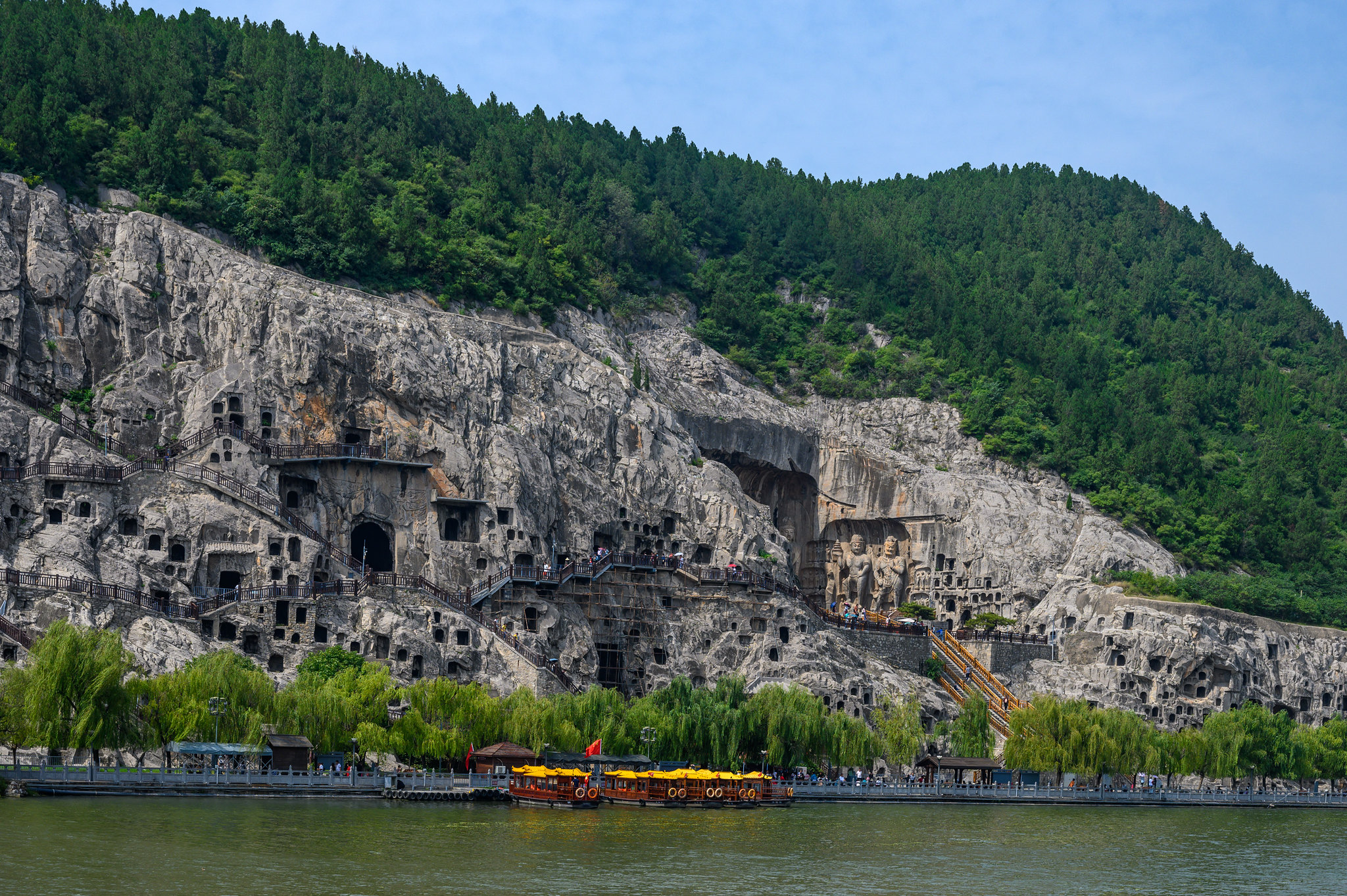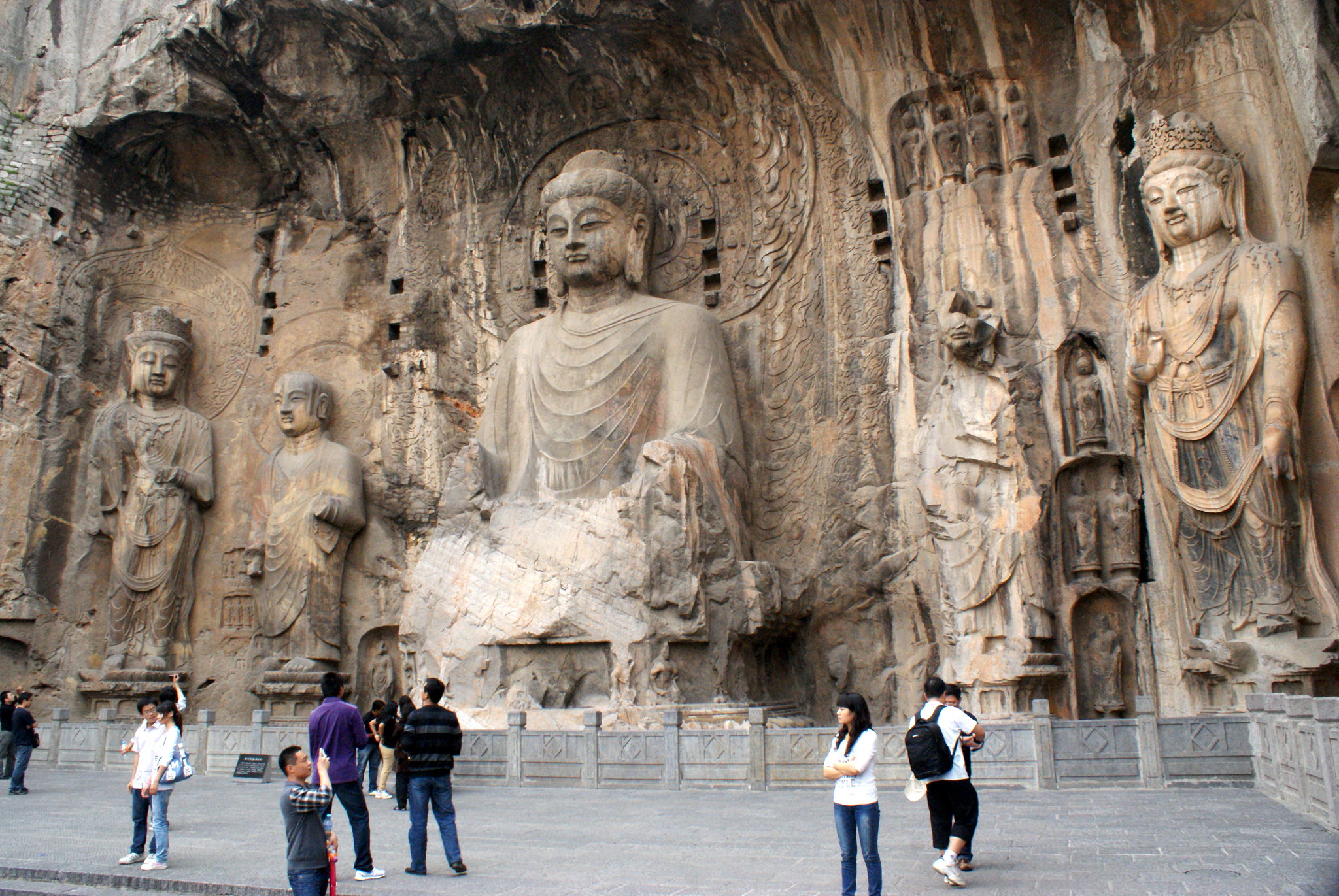Discovering Luoyang’s Longmen Grottoes and Buddhist Heritage
Welcome, fellow adventurers and culture enthusiasts! Here at jusha.travel, we love sharing tips to make your China journey unforgettable. Today, we’re embarking on a fascinating exploration into the heart of China’s rich past: the breathtaking **Luoyang Longmen Grottoes**. Nestled along the tranquil Yi River, just south of the ancient city of Luoyang in Henan province, these grottoes are not merely a collection of caves but a monumental testament to China’s profound Buddhist heritage and artistic prowess. If you’re planning China heritage tours or seeking out immersive **Luoyang cultural sites**, the Longmen Grottoes should be at the very top of your itinerary. They offer an unparalleled glimpse into **China Buddhist history** and stand as one of the most compelling **cultural attractions Luoyang** has to offer. This post serves as your essential **Luoyang travel guide** to understanding the magic and majesty of this UNESCO World Heritage site.
The Grandeur of the Longmen Grottoes: A Historical Masterpiece
Imagine over 2,300 caves and niches carved into towering limestone cliffs, housing approximately 110,000 Buddhist stone statues, over 60 stupas, and 2,800 inscriptions on steles. This is the awe-inspiring scale of the [Longmen Grottoes](https://whc.unesco.org/en/list/1003/), a 1-kilometer stretch of art and history that dates back more than 1,500 years. This monumental complex, alongside Dunhuang’s Mogao Grottoes and Shanxi’s Yungang Grottoes, forms China’s triumvirate of major Buddhist cave sites, each telling a unique story of faith, craftsmanship, and empire. For those interested in other historical sites, this site provides a similar depth as the Terracotta Warriors.
The carving of the **Luoyang Longmen Grottoes** began in AD 493 during the reign of Emperor Xiaowen of the Northern Wei dynasty, when Luoyang became the imperial capital – a city that would serve as the seat for 13 dynasties. Work continued for around 400 years, flourishing through the Northern Wei, Sui, Tang, and Song dynasties, with the most intensive creation occurring from the late 5th to the mid-8th century. This protracted period of development means the grottoes offer a unique visual timeline of evolving artistic styles and religious thought, truly embodying the depth of **China Buddhist history**.
Artistic Evolution and Cultural Significance

The **Luoyang Longmen Grottoes** are celebrated not just for their sheer number of statues but for the unparalleled diversity of their Buddhist sculptures and calligraphic inscriptions. They reflect profound shifts in religious practice, royal patronage, and prevailing artistic styles over many centuries. You’ll observe a fascinating transition from the “Central China Style” of the earlier phases to the more robust and naturalistic “Great Tang Style” that emerged later. Each style, in its own right, proved incredibly influential across China and indeed, throughout Asia. For those on spiritual journeys, this site provides insights similar to Tibet’s offerings.
The sculptural art here is considered a critical contribution to global Buddhist art, showcasing the technical mastery and aesthetic sensibilities of ancient Chinese artisans. Walking through these caves, you’re not just admiring statues; you’re witnessing the tangible expression of deep spiritual devotion and artistic innovation that defined an era. For those on **China heritage tours**, this site provides a tangible link to the past, allowing visitors to feel the echoes of centuries of prayer and artistic creation. It’s a prime example of why these **cultural attractions Luoyang** are so revered.
The Heart of Longmen: West Hill Grottoes and Fengxian Temple

While both sides of the Yi River hold treasures, the West Hill Grottoes are often regarded as the “essence” of Longmen. This side alone houses over 50 significant caves from the Northern Wei and Tang periods. Among them, the [Fengxian Temple](https://www.chinadiscovery.com/henan/luoyang/luoyang-longmen-grottoes.html) is an absolute must-see. This massive open-air shrine features some of the most spectacular giant Buddha statues, carved directly into the cliff face. The central figure, a 17-meter-tall Vairocana Buddha, is flanked by his disciples, bodhisattvas, and celestial guardians, creating an overwhelming sense of majesty and peace. Legend has it that the face of the Vairocana Buddha was modeled after Empress Wu Zetian, a powerful and influential figure during the Tang Dynasty and a devout Buddhist, who also sponsored its construction. For more on ancient sites, check out our guide on China’s Terracotta Army.
Beyond Fengxian Temple, other notable caves include Binyang Cave and Wanfo Cave, each with its unique characteristics and stories. The sheer range of sizes—from the colossal 17-meter Buddha down to delicate, intricate carvings just 2 centimeters tall—showcases both grand public declarations of faith and intimate private devotion. Another fascinating find is the Yaofangdong Cave, unique for its 140 inscriptions documenting historical Chinese medical treatments—a surprising blend of art, religion, and ancient science. These multifaceted elements make the **Luoyang Longmen Grottoes** an endlessly fascinating destination for any comprehensive **Luoyang travel guide**.
Longmen Grottoes: A Beacon of Buddhist Heritage and Global Recognition

As a major Buddhist pilgrimage site, Longmen played a pivotal role in reflecting and shaping the development of Buddhism in China. The site’s artwork provides an extraordinary visual record of Buddhist beliefs, iconography, and practices as they evolved through centuries, influenced by both indigenous traditions and those from Central Asia and India. For those interested in **China Buddhist history**, the grottoes offer an unparalleled opportunity to trace the spread and adaptation of a global religion within a distinct Chinese context. More details can be found on sites like [Khan Academy](https://www.khanacademy.org/humanities/ap-art-history/south-east-se-asia/china-art/a/longmen-caves-luoyang), which delves into the art historical significance. To explore more temples, see our list of hidden temples in China.
In recognition of its immense artistic, spiritual, and historic value, the **Luoyang Longmen Grottoes** were designated a [UNESCO World Heritage Site in 2000](https://whc.unesco.org/en/list/1003/). UNESCO lauded it as an “outstanding manifestation of human artistic creativity” and for its “perfection of an art form,” noting its profound influence on Buddhist art across Asia. This recognition underscores its global importance and status as one of the world’s most significant **Luoyang cultural sites**. Researchers have also conducted fascinating investigations, such as those detailed in the [V&A Museum’s blog](https://www.vam.ac.uk/blog/museum-life/investigating-an-ancient-buddhist-sculpture-the-longmen-grottoes), revealing more about the history and techniques used.
Visiting Today: Tips for Your Trip
Visiting the **Luoyang Longmen Grottoes** today is a remarkably accessible experience. Bridges span the serene Yi River, connecting visitors to both the East and West hills, allowing for comprehensive exploration. The site is meticulously preserved, attracting scholars, artists, and tourists from around the globe keen to immerse themselves in one of China’s richest historical and artistic treasures.
When planning your visit, consider dedicating at least half a day to truly absorb the grandeur. Wear comfortable shoes, as there’s a fair amount of walking involved. While the weather in Luoyang can vary, spring and autumn generally offer the most pleasant temperatures for exploring. Remember that while photography is allowed in most areas, using flash might be restricted in some delicate sections to protect the ancient carvings. For practical information and more detailed planning, resources like [China Discovery](https://www.chinadiscovery.com/henan/luoyang/luoyang-longmen-grottoes.html) offer excellent travel advice.
Conclusion: A Journey Through Time and Spirit
The **Luoyang Longmen Grottoes** offer more than just a sightseeing opportunity; they provide a profound journey through time, faith, and artistic excellence. They are a vibrant, living testament to **China Buddhist history** and represent some of the most compelling **cultural attractions Luoyang** can boast. For anyone embarking on China heritage tours, this site is an essential experience, revealing the deep layers of Chinese civilization.
Here at jusha.travel, we believe that understanding sites like Longmen enriches your overall experience of China. It’s a chance to connect with centuries of human endeavor, artistic genius, and spiritual devotion. Whether you’re a history buff, an art lover, or simply curious about China’s incredible past, the **Luoyang Longmen Grottoes** will leave an indelible impression.
What are your thoughts on visiting such an ancient and magnificent site? Have you been to the Longmen Grottoes, or is it now on your bucket list? Share your experiences and questions in the comments below! And for more insightful **Luoyang travel guide** tips and content to inspire your adventures, be sure to explore more articles on jusha.travel – your gateway to discovering the wonders of China.

